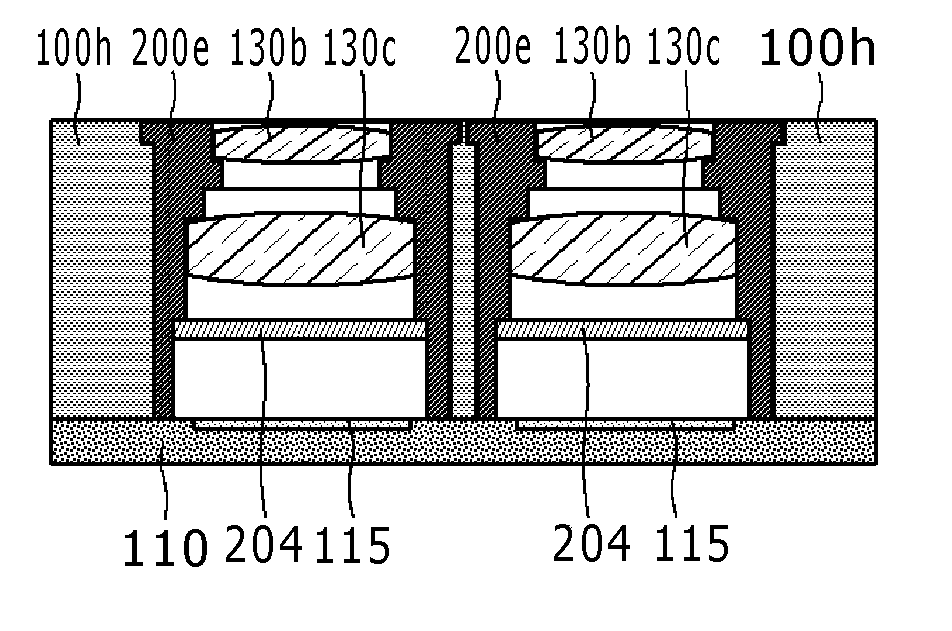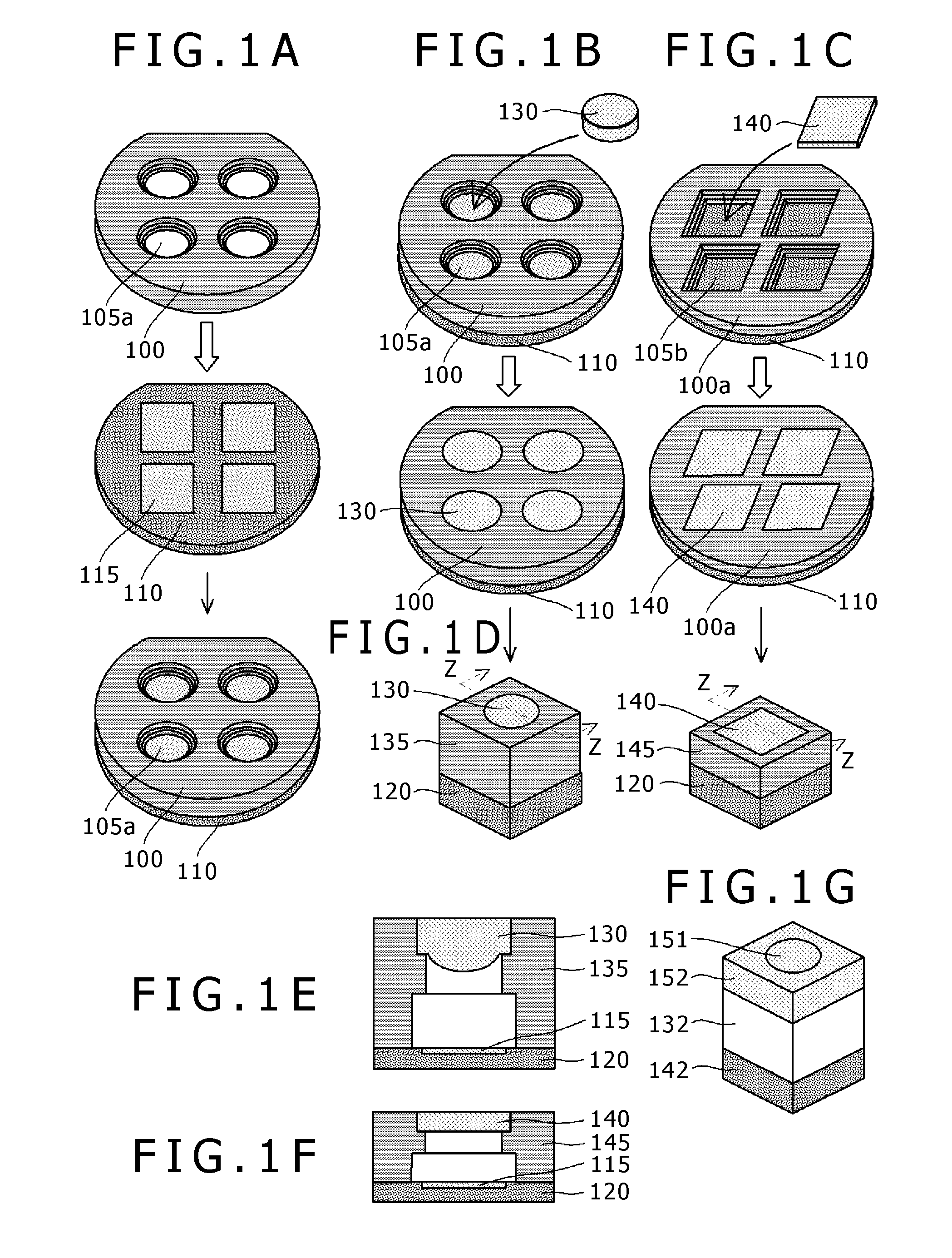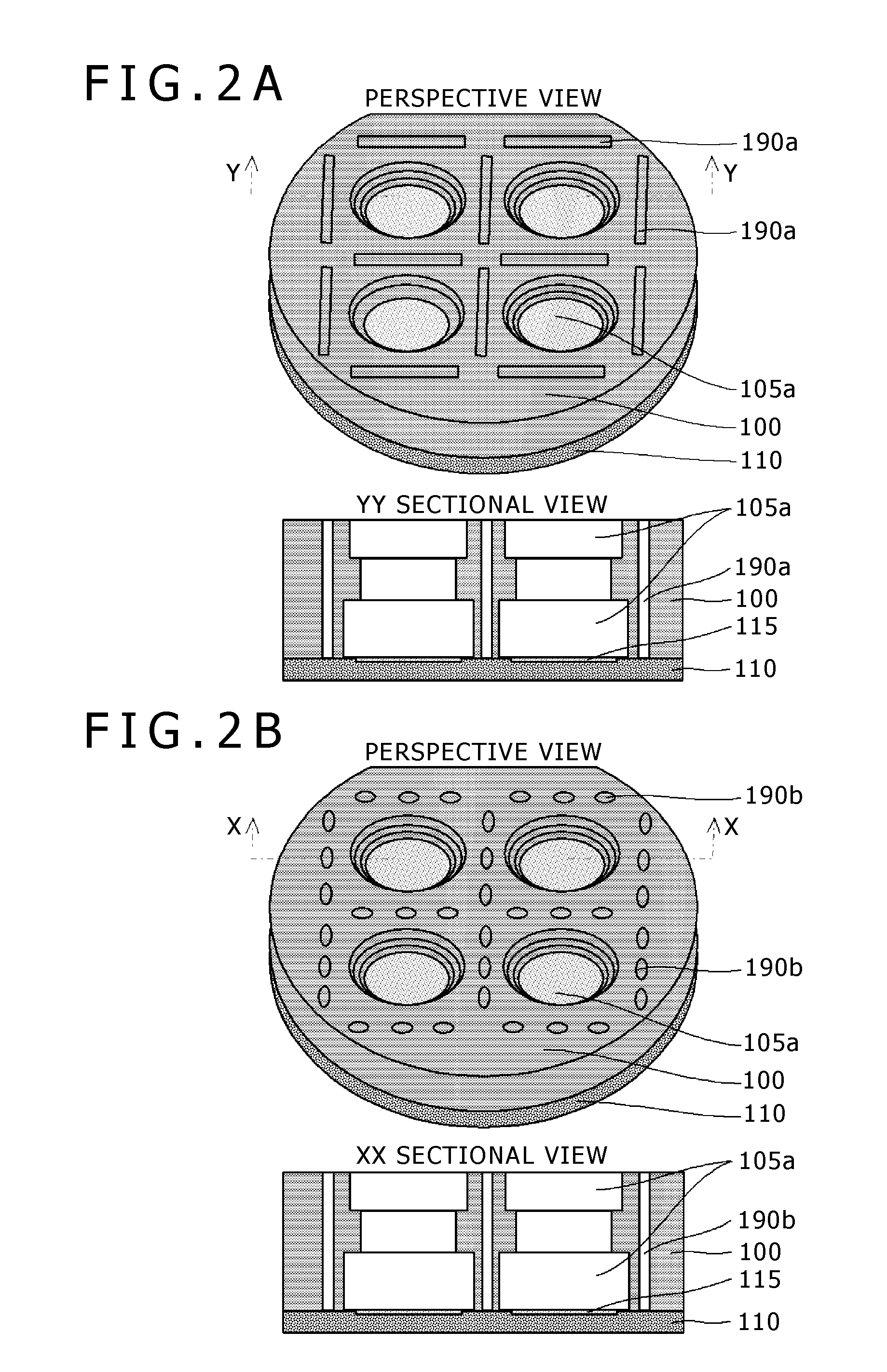Photoelectric conversion device, package structure therefor, and method of manufacturing photoelectric conversion device
a technology of photoelectric conversion and package structure, which is applied in the direction of electrical equipment, semiconductor devices, radio frequency controlled devices, etc., can solve the problems of poor light-blocking properties of glass chips b>132/b>, large number of steps, and low yield, so as to reduce size (tallness, thickness) and cost, and improve light-blocking properties. , the effect of simple structur
- Summary
- Abstract
- Description
- Claims
- Application Information
AI Technical Summary
Benefits of technology
Problems solved by technology
Method used
Image
Examples
embodiments
[0084]FIGS. 1A to 1F illustrate methods of manufacturing a camera module and configurations of the camera modules, in embodiments of the present technology, wherein FIG. 1A shows perspective views for illustrating bonding between a black wafer and a semiconductor wafer, FIGS. 1B and 1C show perspective views for illustrating insertion of optical elements into insertion openings formed in a black wafer, FIG. 1D shows perspective views for each illustrating a module obtained by cutting a bonded wafer body into individual pieces, and FIGS. 1E and 1F show ZZ sectional views of the modules, with FIG. 1G being a perspective view for illustrating a camera module according to related art.
[0085]As shown in FIG. 1A, a black wafer 100 having a plurality of insertion openings 105a formed so that optical elements such as lenses 130, etc. or optical barrels described later are to be inserted and fixed therein and a semiconductor wafer 110 formed with a plurality of image sensor regions 115 are bo...
PUM
 Login to View More
Login to View More Abstract
Description
Claims
Application Information
 Login to View More
Login to View More - R&D
- Intellectual Property
- Life Sciences
- Materials
- Tech Scout
- Unparalleled Data Quality
- Higher Quality Content
- 60% Fewer Hallucinations
Browse by: Latest US Patents, China's latest patents, Technical Efficacy Thesaurus, Application Domain, Technology Topic, Popular Technical Reports.
© 2025 PatSnap. All rights reserved.Legal|Privacy policy|Modern Slavery Act Transparency Statement|Sitemap|About US| Contact US: help@patsnap.com



